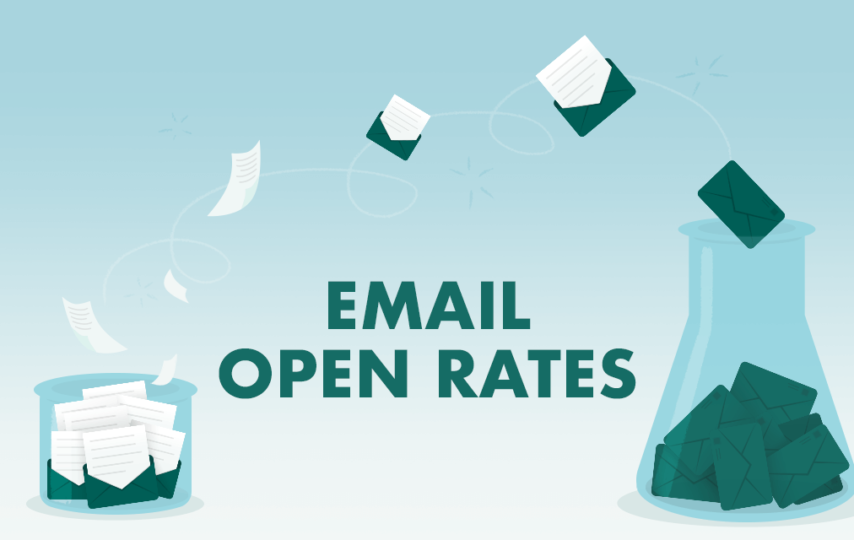As an experienced email marketer and psychologist, I’ve delved deep into the science of email open rates. Understanding the psychology behind why people open (or don’t open) emails can be the key to unlocking higher engagement and conversion rates. Let’s explore the factors that influence email open rates and how you can leverage this knowledge to boost your email marketing success.
#1 The Tracking Pixel and Its Limitations
Email open rates are tracked using a tracking pixel – a one-pixel transparent graphic embedded in emails. When an email is opened and all its images load, the pixel fires, indicating an “open.”
However, this method has its limitations:
- Some Internet Service Providers (ISPs) and users don’t load email graphics, meaning the tracking pixel won’t fire.
- Many mobile and tablet devices don’t load graphics in emails.
- Some users set their email clients to display only text-formatted emails.
- Others set preferences to not share tracking information.
Given these factors, it’s possible that your open rates are slightly underreported.
#2 The Power of the Subject Line
The subject line is the first thing your subscriber sees. It’s your email’s first impression, and it can make or break your open rates. A compelling subject line draws the subscriber in, giving them a reason to open your email. Here are some tips:
Keep it short and sweet
People often skim through their inboxes quickly. A lengthy subject line might get truncated, especially on mobile devices, making it less likely for the recipient to grasp its essence. A concise subject line is easier to read and understand at a glance. It ensures that your message is conveyed effectively, even to those who are quickly scrolling through their emails.
Aim for about 50 characters or less. Remove any unnecessary words and get straight to the point. Remember, the goal is to convey the main idea of your email in as few words as possible.
Personalize it
Personalization makes the recipient feel that the email is specifically tailored for them, rather than being a generic mass message. Emails with personalized subject lines are more likely to be opened. They create a sense of connection and relevance, making the recipient feel valued and understood.
Use the recipient’s name or reference something specific to them. For instance, “John, here’s a special offer just for you!” or “Your monthly report is ready, Jane.” Tools and email marketing platforms often allow for easy personalization using tags or placeholders.
Be creative, but remain clear
While it’s essential to stand out in a crowded inbox, clarity should never be sacrificed for the sake of creativity. The subscriber should understand the email’s purpose immediately upon reading the subject line.
A clear yet creative subject line captures attention while ensuring the message’s intent is not lost. This balance increases the chances of the email being opened and the content inside being consumed.
Use wordplay, puns, or questions to pique curiosity, but always ensure the subject line directly relates to the email’s content. For instance, a subject line like “Un-bee-lievable Savings Inside!” for a honey sale is creative yet clear about the email’s offer.
#3 Frequency Matters
The regularity with which you send out emails plays a pivotal role in determining your open rates. When emails are sent out sporadically, there’s a higher chance that subscribers might forget about your brand or even fail to recognize it when they do receive a communication.
Conversely, inundating your subscribers with a barrage of emails in a short span can overwhelm them, leading to a surge in unsubscribe rates. It’s imperative to strike the right balance, ensuring consistent communication without overwhelming your audience.
#4 Content is King
The content of your emails serves as the backbone of your email marketing strategy. If the content comes across as bland or irrelevant, it can swiftly lead to dwindling open rates. It’s essential to consistently provide value to your subscribers, offering them information or insights they find beneficial.
In the realm of e-commerce development (the journey you can start here), the content of your emails takes on an even more pivotal role. As e-commerce platforms evolve, understanding customer preferences, buying habits, and the latest market trends becomes crucial. Incorporating insights from e-commerce analytics into your content strategy can lead to more personalized and engaging emails.
By segmenting your audience, you can tailor your content to resonate with specific groups, ensuring relevance and increased engagement.
#5 The Words You Choose
The language and terminology you use in your emails can have unintended consequences. Certain words or phrases, especially those commonly associated with spam, can trigger spam filters, causing your emails to be relegated to the dreaded spam folder.
Additionally, relying heavily on overused buzzwords can erode your brand’s credibility, making subscribers skeptical of your content. It’s crucial to choose your words wisely, ensuring clarity and authenticity in your communication.
#6 Personalization is Key
Generic content often goes unnoticed. Subscribers crave personalized experiences that make them feel valued. By treating each subscriber as a unique individual and tailoring content to their specific needs and preferences, you can significantly enhance open rates.
This personal touch not only boosts engagement but also fosters a deeper connection between the brand and the subscriber.
#7 Test, Test, Test
No two audiences are the same, and what works for one might not resonate with another. It’s essential to adopt a culture of continuous testing in your email marketing strategy.
By regularly testing different subject lines, design layouts, and content types, you can gain insights into what truly resonates with your subscribers, allowing you to refine your approach and optimize results.
#8 Avoid Negativity
The tone of your emails can significantly influence subscriber engagement. Subject lines or content with negative connotations can be off-putting, especially if a subscriber is already having a challenging day.
Instead of focusing on negative aspects, it’s beneficial to adopt a positive messaging strategy that encourages and entices subscribers to engage with your content.
#9 Segmentation Boosts Engagement
Not all subscribers are created equal, and their interests can vary widely. By segmenting your email list, you can ensure that the content delivered is relevant to each specific group.
This targeted approach not only increases the likelihood of emails being opened but also boosts overall engagement, as subscribers find the content more aligned with their interests.
#10 Watch Your Spam Score
Ensuring your emails reach the subscriber’s inbox is the first step towards achieving high open rates. Emails with high spam scores are more likely to end up in spam folders, drastically reducing their visibility.
By using tools like isnotspam.com, you can monitor your spam score and make the necessary adjustments to ensure optimal deliverability.
#11 Email Rendering and Design
The visual appeal and functionality of your emails play a significant role in subscriber engagement. It’s essential to ensure that your emails render well across various email clients and devices.
If an email is poorly designed or doesn’t display correctly, subscribers are less likely to engage with the content, leading to decreased open rates.
#12 Image vs. Text Ratio
While captivating visuals can enhance the appeal of your emails, it’s crucial to strike the right balance between images and text. Overloading an email with images and providing minimal text can trigger spam filters.
Moreover, some email clients block images by default, making the content incomprehensible. Aiming for a balanced 60% text to 40% imagery/graphics ratio ensures clarity while maintaining visual appeal.
#13 Avoid Common Pitfalls
- Limit the number of links in your email. Overloading your email with numerous links can be overwhelming for subscribers and can also trigger spam filters. A concise, focused email with fewer links appears more trustworthy and is more likely to engage the reader.
- Avoid spelling errors, especially in subject lines. Spelling mistakes, particularly in subject lines, can make your brand appear careless or unprofessional, especially in the domain of B2B email marketing. Moreover, they can raise suspicions about the authenticity of the email, leading subscribers to dismiss it as potential spam.
- Don’t frequently change your “From” name. Consistency in the “From” name helps build brand recognition and trust. Frequently changing it can confuse subscribers, making them less likely to open your emails due to unfamiliarity.
- Encourage subscribers to mark your emails as safe. By doing this, you ensure that your emails land in the primary inbox rather than the spam or promotions folder. This increases the visibility and open rates of your emails, ensuring your content reaches your audience.
- Use double opt-in for subscriptions to ensure genuine interest. Double opt-in requires subscribers to confirm their subscription, ensuring that they genuinely want to receive your content. This not only improves open rates but also reduces the chances of being marked as spam.
- Verify your domain via SPF to improve deliverability. Sender Policy Framework (SPF) is an email authentication method that detects and blocks email spoofing. By verifying your domain via SPF, you enhance your email’s credibility, ensuring it reaches the subscriber’s inbox and not the spam folder.
- Continuously focus on growing and refreshing your subscriber list. Over time, some subscribers may become less engaged, or their preferences might change. Regularly updating and growing your list ensures you’re reaching a relevant and interested audience, leading to higher engagement.
- Optimize your send times based on when your audience is most active. Sending emails when your subscribers are most likely to check their inbox increases the chances of your email being opened and read. Understanding and leveraging your audience’s habits can significantly boost open rates.
Wrapping Up
Understanding the nuances that influence open rates is essential for a successful campaign. From the technicalities of tracking pixels to crafting compelling subject lines, every detail matters. As we’ve explored, the psychology behind email engagement is multifaceted, intertwining both the marketer’s strategy and the subscriber’s perception.
By being mindful of these factors and continuously adapting to the ever-evolving landscape of digital communication, you can ensure that your emails not only reach their intended recipients but also resonate deeply with them.








